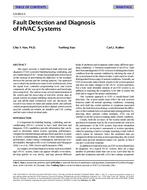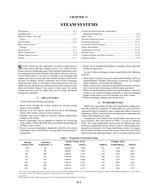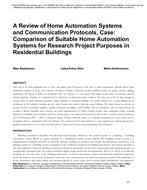Factors influencing the steady-state heat transfers to horizontal chilled-water or from hot-water pipelines, within an atmospheric-pressure, air-filled, relatively hot or cold respectively, horizontal rectangular trench, have been considered. An experimental investigation, using the displacement . ratio of the pipe as the experimental variable, revealed the optimal configuration, i .e ., that which achieves the minimum steady-state rate of heat exchange between the pipe and its surroundings under the considered conditions. For a set of temperatures for the pipe and the trench walls, corresponding closely with those likely to occur in practice, it has been deduced that the optimal configuration of the “supply” pipe occurred at displacement ratios of +0 .67 and -0 .73, for district-cooling and district-heating systems, respectively, i .e ., with the horizontal pipe placed equidistant between the vertical walls in the lower region of the cavity in the case of district cooling and in the upper region for district heating. Such conclusions are of significance with respect to achieving maximum energy thrift, because these recommended configurations differ radically from the arrangements of the pipes traditionally adopted in district-cooling or district-heating designs.
Units: SI
Citation: ASHRAE Transactions, 1986, vol. 92, pt. 2A, Portland, OR
Product Details
- Published:
- 1986
- Number of Pages:
- 12
- File Size:
- 1 file , 1.8 MB
- Product Code(s):
- D-PO-86-2991


